Activism
‘Empathy and Curiosity:’ How queen jaks is Helping Haas Make Teaching More Inclusive
Over the past year, queen has been helping Haas faculty navigate the minefield of changing mores and heightened awareness around a range of topics often referred to as diversity, equity, inclusion, justice, and belonging (DEIJB).

By Laura Counts
UC Berkeley News
When Dr. queen jaks walks into a Berkeley Haas classroom and sits in the back scribbling notes, students wonder what’s going on.
“They think the professor is in trouble and I’m there to get the dirt,” says queen, who writes her name with lowercase letters.
But as the school’s first diversity instructional support consultant, queen is not an enforcer. She’s there as an invited guest of faculty members who want help in making their teaching more inclusive.
“It’s so important to make it clear that I’m not there to tell people they’re doing something wrong. I’m not there to hear both sides,” she says. “I’m there because the instructor wants support.”
Unique role
Over the past year, queen has been helping Haas faculty navigate the minefield of changing mores and heightened awareness around a range of topics often referred to as diversity, equity, inclusion, justice, and belonging (DEIJB). Her role is unique: Rather being called in to mediate when things heat up, she coaches instructors individually—by observing classes, offering suggestions on course content, or consulting on issues that come up in class. She also teaches best practices through brief workshops and exercises.
Holding both an MBA and a PhD in organizational behavior, queen is fluent in the language of academia, while also drawing on her own experiences of feeling like an outsider who broke into that world as a first-generation student from an impoverished community. She grew up in San Diego and earned a BS in business administration from UC Riverside, going on for her MBA from the University of Redlands and her doctorate from Case Western Reserve University.
She approaches the job with empathy, curiosity, and a natural sense of humor.
“We’re all learning, we’re all going to make mistakes, and that’s okay,” says queen, whose own research focuses on the contributions of marginalized communities. “Society is evolving, and people want change really badly, so everything that comes out of your mouth in the classroom is going to be scrutinized. I’m here to say ‘I feel you. Now let’s turn it around and see how that might be perceived.’”
Haas Chief DEI Officer Élida Bautista dreamed up the new role in response to growing demand from students for more diversity in course content and on the faculty. In addition to the work Haas is doing to hire more diverse faculty members and an effort led by the Center for Equity, Gender and Leadership to compile a library of business cases featuring diverse protagonists, Bautista wanted to find a way to directly support current faculty. Dean Ann Harrison greenlighted the pilot position.
“When I looked around for consultants and talked to my counterparts at other business schools and universities, no one was doing this—so we didn’t really have a model,” Bautista says. As a clinical psychologist, she designed the role so that all services would be confidential and voluntary.
“Anytime you force people to do something, there’s an inherent resistance and that decreases the efficacy,” she said. “Some people think that when you make something voluntary, you end up preaching to the choir. But even the choir needs tuning: People who are bought into these ideas still need skills to carry them out, and they’ll end up bringing others along.”
Sensitive content
That’s what has happened. Associate Professor Juliana Schroeder—who championed the new role along with associate deans Jennifer Chatman and Don Moore and served on the hiring committee—offered to be a guinea pig for queen to observe her leadership class.
Schroeder is a social psychologist who has thought carefully about diversity and psychological safety in her teaching and materials. Still, on the day of the observation, when she was referencing the 1986 Challenger Space Shuttle explosion to shed light on decision-making pitfalls for a case study about car racing, a student had a “PTSD-like” incident in her classroom.
“He was an Army veteran, and this was directly relevant to his experience,” Schroeder says. “I was so glad queen was there that day, and I was blown away by how great her feedback was. It really illustrated what a benefit it was to have someone well-trained in these topics right there in my classroom.”
After the session, queen gave Schroeder a detailed report with suggestions on adjusting her script and offering both a written and verbal alert for sensitive topics. It also included a list of things she was doing well, and some practices to add—such as repeating back answers that were lower in volume, acknowledging students who were waiting to speak, and using contrasting colors on slides—as well as including photos in her slides that would show diversity beyond race and gender.
Word of mouth
Schroeder thought it was so helpful she asked to share it with other faculty members, and soon queen had a full calendar.
“Every single person I’ve worked with has been so receptive,” queen says. “I’ve spent a lot of time at business schools, and it’s been jaw-dropping how much Haas has embraced this.”
Associate Professor Mathijs De Vaan invited her to sit in on a session focused on DEIJB in his MBA course Leading People. De Vaan, who grew up in The Netherlands, is mindful that his class includes international students who may be new to American culture, as well as students with backgrounds that have been marginalized in the U.S.
“It’s a challenge. There’s always a group of students who are very knowledgeable and very vocal, and others who know these are sensitive subjects and are afraid to speak at all,” says De Vaan. “I wanted students to be on the same page in understanding the scope of the problem that racism and discrimination represent in the U.S., so I gave them a number of examples of where companies fell short.”
That’s important, queen told him, but it can also be stressful for some students. “For minority students in the room, it might reinforce the idea that their group is marginalized,” he says. To address this, in the next iteration of the class he focused less on examples of problematic situations, and more on possible solutions to societal challenges.
Activism
Oakland Post: Week of November 26 – December 2, 2025
The printed Weekly Edition of the Oakland Post: Week of November 26 – December 2, 2025
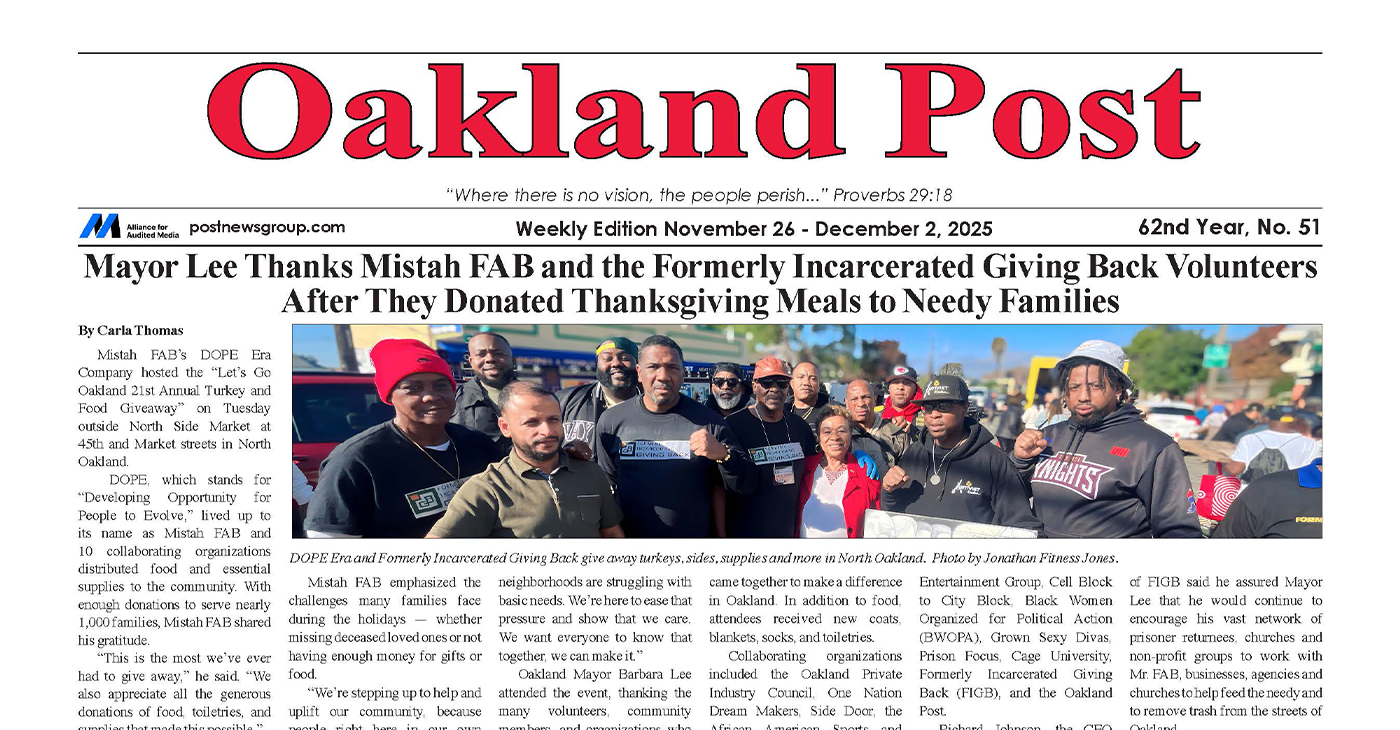
To enlarge your view of this issue, use the slider, magnifying glass icon or full page icon in the lower right corner of the browser window.
Activism
Oakland Post: Week of November 19 – 25, 2025
The printed Weekly Edition of the Oakland Post: Week of November 19 – 25, 2025
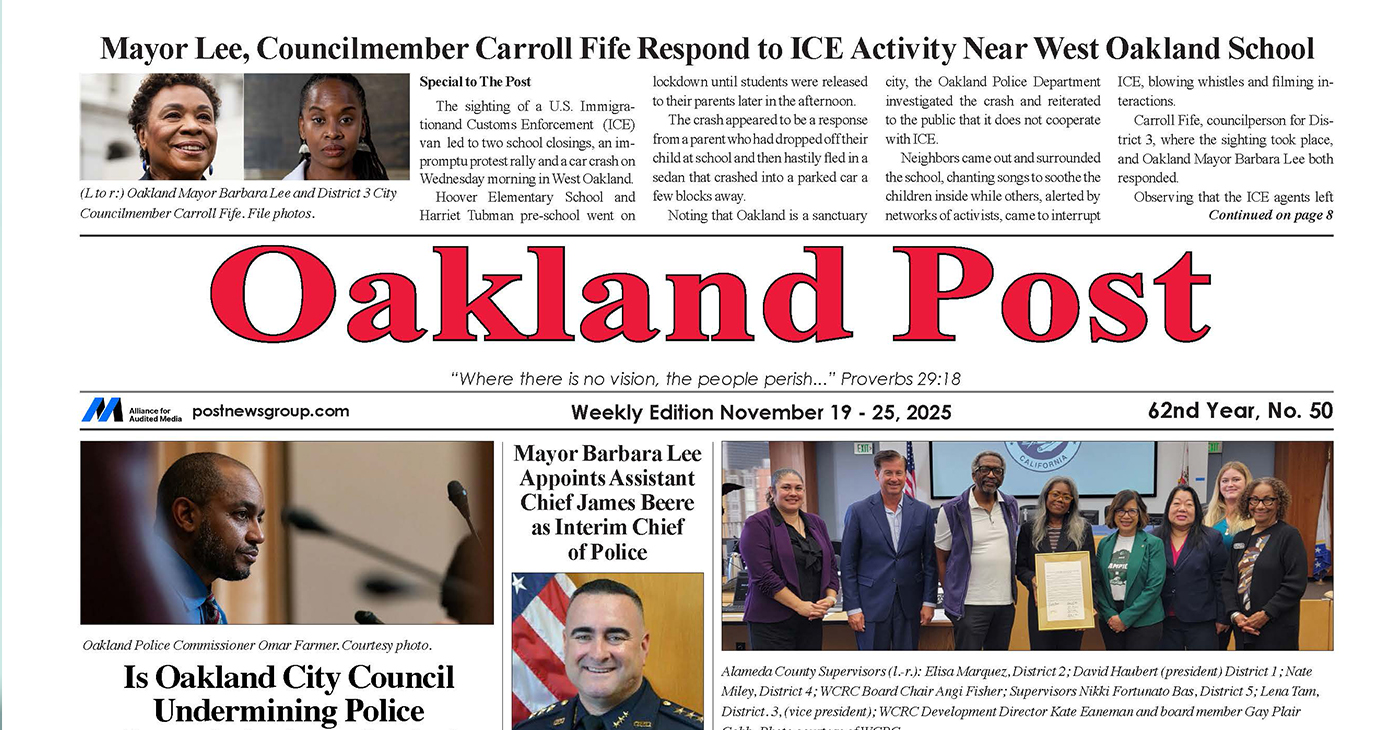
To enlarge your view of this issue, use the slider, magnifying glass icon or full page icon in the lower right corner of the browser window.
Activism
IN MEMORIAM: William ‘Bill’ Patterson, 94
Bill devoted his life to public service and education. In 1971, he became the founding director for the Peralta Community College Foundation, he also became an administrator for Oakland Parks and Recreation overseeing 23 recreation centers, the Oakland Zoo, Children’s Fairyland, Lake Merritt, and the Henry J. Kaiser Convention Center.
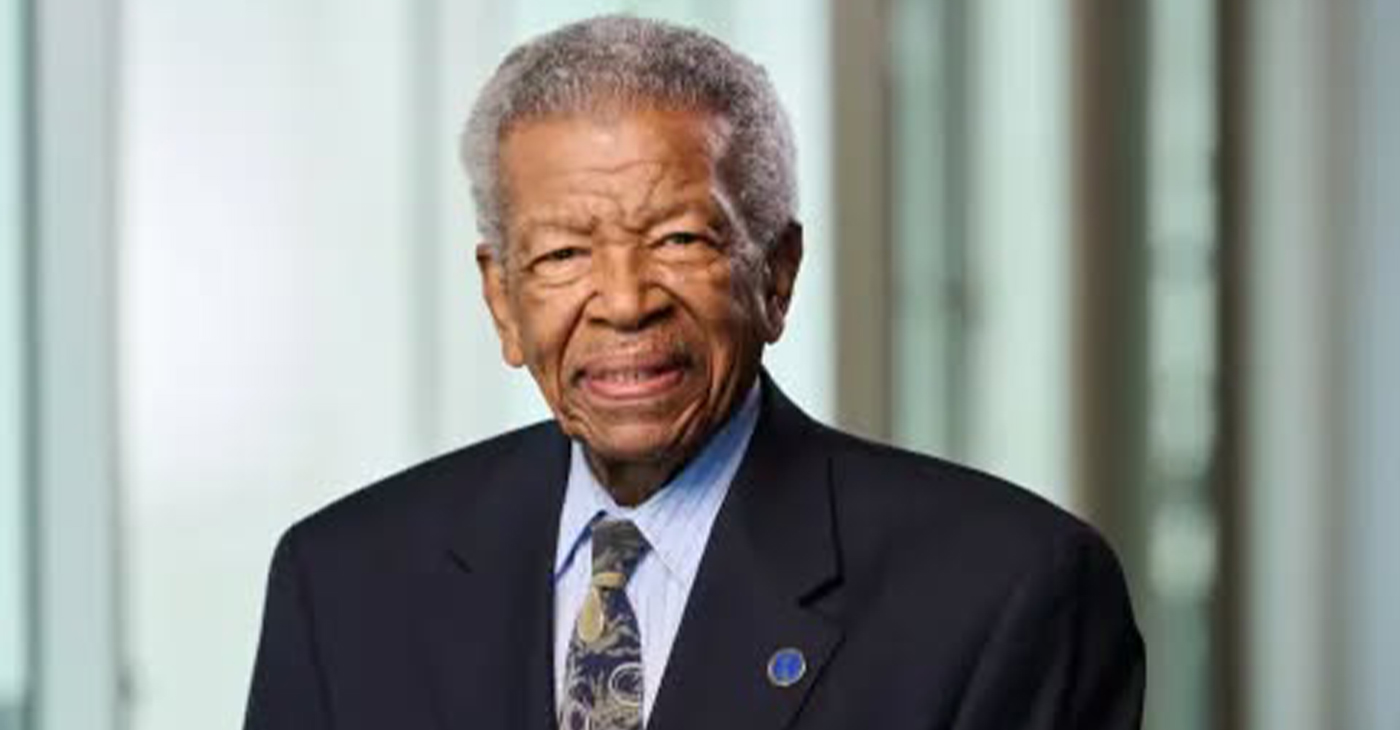
William “Bill” Patterson, 94, of Little Rock, Arkansas, passed away peacefully on October 21, 2025, at his home in Oakland, CA. He was born on May 19, 1931, to Marie Childress Patterson and William Benjamin Patterson in Little Rock, Arkansas. He graduated from Dunbar High School and traveled to Oakland, California, in 1948. William Patterson graduated from San Francisco State University, earning both graduate and undergraduate degrees. He married Euradell “Dell” Patterson in 1961. Bill lovingly took care of his wife, Dell, until she died in 2020.
Bill devoted his life to public service and education. In 1971, he became the founding director for the Peralta Community College Foundation, he also became an administrator for Oakland Parks and Recreation overseeing 23 recreation centers, the Oakland Zoo, Children’s Fairyland, Lake Merritt, and the Henry J. Kaiser Convention Center.
He served on the boards of Oakland’s Urban Strategies Council, the Oakland Public Ethics Commission, and the Oakland Workforce Development Board.
He was a three-term president of the Oakland branch of the NAACP.
Bill was initiated in the Gamma Alpha chapter of Kappa Alpha Psi Fraternity.
In 1997 Bill was appointed to the East Bay Utility District Board of Directors. William Patterson was the first African American Board President and served the board for 27 years.
Bill’s impact reached far beyond his various important and impactful positions.
Bill mentored politicians, athletes and young people. Among those he mentored and advised are legends Joe Morgan, Bill Russell, Frank Robinson, Curt Flood, and Lionel Wilson to name a few.
He is survived by his son, William David Patterson, and one sister, Sarah Ann Strickland, and a host of other family members and friends.
A celebration of life service will take place at Henry J. Kaiser Convention Center (Calvin Simmons Theater) on November 21, 2025, at 10 AM.
His services are being livestreamed at: https://www.facebook.com/events/1250167107131991/
In lieu of flowers, donations can be made to the Euradell and William Patterson scholarship fund TBA.
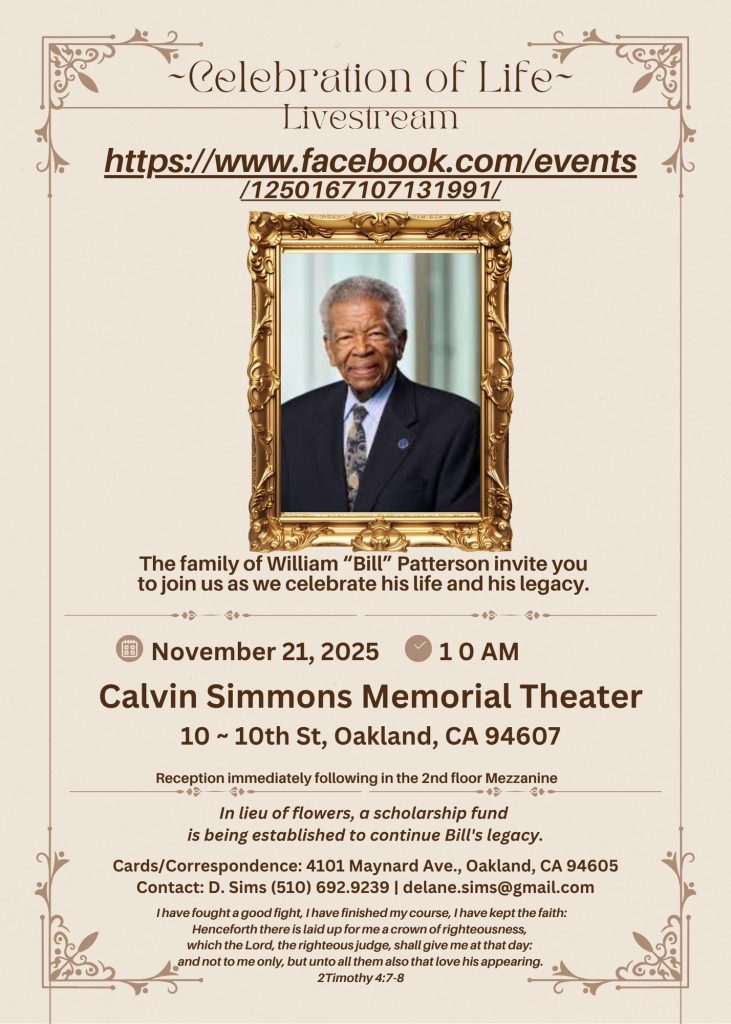
-

 Activism3 weeks ago
Activism3 weeks agoOakland Post: Week of November 12 – 18, 2025
-
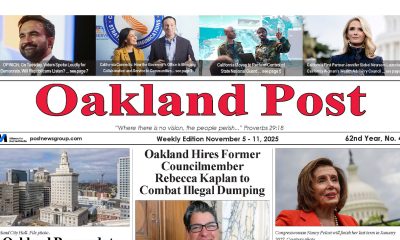
 Activism4 weeks ago
Activism4 weeks agoOakland Post: Week of November 5 – 11, 2025
-

 Activism2 weeks ago
Activism2 weeks agoIN MEMORIAM: William ‘Bill’ Patterson, 94
-

 Activism3 weeks ago
Activism3 weeks agoHow Charles R. Drew University Navigated More Than $20 Million in Fed Cuts – Still Prioritizing Students and Community Health
-

 #NNPA BlackPress3 weeks ago
#NNPA BlackPress3 weeks agoThe Perfumed Hand of Hypocrisy: Trump Hosted Former Terror Suspect While America Condemns a Muslim Mayor
-

 Bay Area3 weeks ago
Bay Area3 weeks agoNo Justice in the Justice System
-

 #NNPA BlackPress3 weeks ago
#NNPA BlackPress3 weeks agoProtecting Pedophiles: The GOP’s Warped Crusade Against Its Own Lies
-

 #NNPA BlackPress2 weeks ago
#NNPA BlackPress2 weeks agoTrump’s Death Threat Rhetoric Sends Nation into Crisis




















































